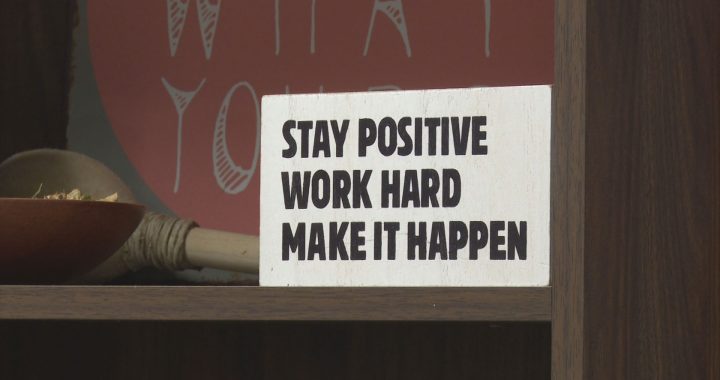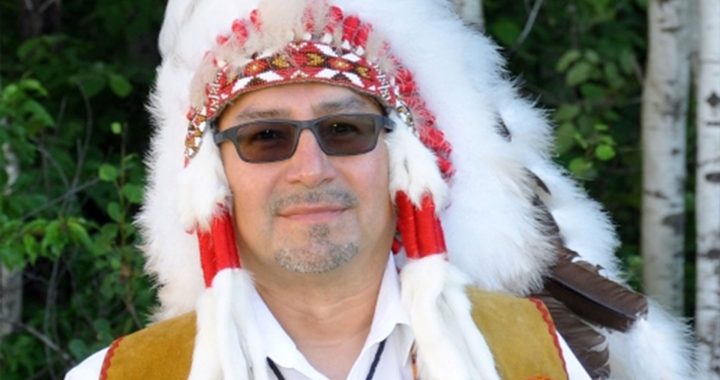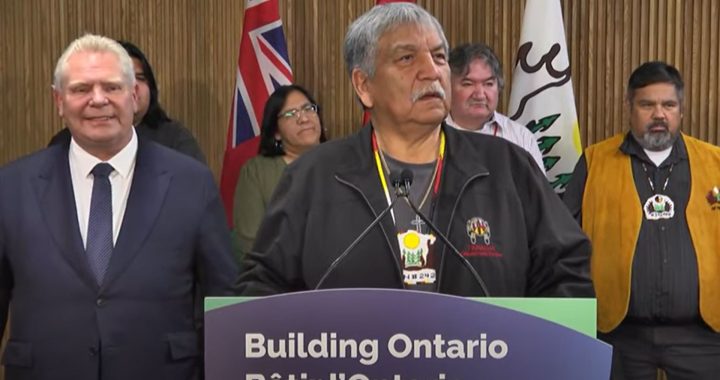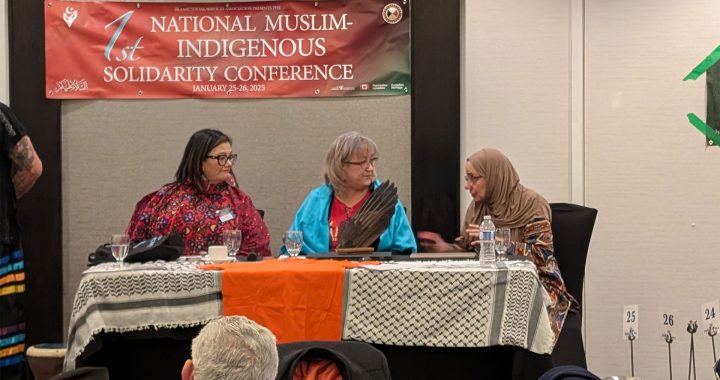This story deals with suicide. Help is available for crisis and prevention. Talk Suicide Canada (1-833-456-4566), Kids Help Phone, the Hope for Wellness Help Line, and 1 866 APPELLE (277-3553) (Quebec residents), that all offer 24/7 support. If you or someone you know is in immediate danger, please call 9-1-1.
A grief counsellor from Lac Simon, a small Anishinaabe community 170 km north of Montreal, says the community is still trying to come to grips with a rash of suicides in December and January.
“It’s been exhausting. I have to make sure I rest. We work intensely three to four days straight, from the announcement to the burial, to help families grieve,” said Anishnapeo in French.
Anishnapeo travelled to Montreal to speak at a suicide conference called Dialogue for Life last week. It’s an annual Indigenous-focused conference that features multi-day workshops on suicide prevention, grief and loss.
Anishnapeo was leading a workshop on the grieving process.
“We had a first wave of suicides in 2010, with young people. In 48 hours we had two suicides, two young mothers, and young women. Since then, the community works a lot on suicide prevention,” she said.
“In Lac Simon there are a lot of programs in the community, and the Indigenous and non-Indigenous intervenors work mutually together.”
Lac Simon and its sister community of Kitsisakik had a wave of suicides which are currently under investigation by Quebec’s human rights commission.
While she said Lac Simon has built up their caring capacity, she said there is a dire need for more psychologists and education on the grieving process in the community. Her workshop was overflowing with Indigenous people learning how to deal with loss.
“The people who came to see me for these workshops are still in the denial phase. They weren’t able to do the other steps,” said Anishnapeo in French.
Drawing from personal experience of the loss of several family members, she led them through the five stages of grief adapted to Indigenous realities, including reorganizing your life after a loss and seeking care from Elders and psychologists.
“You have to be able to say ‘yes, they’re gone, I miss them,’ but after that, you have to continue to live. Because you have other people who need you,” she said, “That’s how I saw my losses and grief.”
ASIST may help save lives
This year’s edition was the first fully in-person Dialogue for Life conference since the pandemic and received thousands of Indigenous people from across Quebec and Ontario. The event is hosted by the First Nations and Inuit Suicide Prevention Association of Quebec and Labrador (SPAQL), an organization that works with Canada and Quebec suicide prevention organizations to advocate for Indigenous mental health.
There, practical workshops for providing support to people who are having suicidal thoughts, like the “ASIST” workshop led by Kateri Oesterrich of Kahnawà:ke. “ASIST” stands for “Applied Suicide Intervention Skills Training.” It’s a program that originated in Alberta that trains people to recognize suicide warning signs and help those in distress.
“If we start talking about mental health and learning how to do interventions of suicide, we help our youth understand that as adults we’re safe people talk to, and that we’re not going to be judgmental about their reasons for suicide, that really it’s about keeping them alive,” she said.
Oesterreich is also a paramedic, and she says ASIST training has served her not only at work, but within her own circle of loved ones.
“I know from my personal experience I’ve probably used this training more than I’ve ever used CPR,” she said. “Everybody’s trained in CPR, but the reality is we all need to be trained in some type of mental health training.”
Elder Eli Lorney Bob of Atikameksheng Anishnawbek First Nation in northern Ontario spoke about the importance of traditional teachings in suicide prevention.
“Our whole identity has pretty well been turned upside down. Most of our spirits understand who we are and not what we are,” he said. “It’s important for a person to know who they are to be able to understand your journey on this world.”
He said that it’s important to take time and provide a safe space for people.
“Speaking about what’s happening to us and what’s happened to us, there is healing. There is a destination, and it’s a very for sure destination,” said Bob. “It gives you strength just to be able to even put it to words, put it to music, put it to the wind. “
Harry Snowboy from the Cree Nation of Chisasibi in northwestern Quebec, was one of the onsite traditional healers for attendees. He said a lot of the work he does surrounds issues of self-love and identity.
“Life was celebrated when it came to this world. Life was celebrated when life passed on from this world. That’s what our culture was based on was the celebration of life. So when you take that away from somebody and what you gve them is brutality and abuse, what do you expect? You’re taking the humanity away from that person,” he said.
“That’s what we’re overcoming right now. That’s what [suicide] prevention is, you’re trying to give back again. That’s what we’re trying to do as healers.”
Snowboy said that the Dialogue for Life conference helps raise awareness of suicide by identifying the cause of peoples’ pain, like the residential school experience.
“Stop calling them schools. They were not schools, they were detention centres. It was kidnapping of a people, kidnapping of children from their homes. Schools do not have burial grounds,” said Snowboy.
Snowboy’s parents attended residential schools, and he said his family is working to heal from intergenerational trauma.
“It’s a process. It’s a process that’s probably not going to not only be in this generation but the generation after,” he said, “I tell my kids, I say don’t carry on my hurt. Don’t carry on my trauma. Learn from my trauma, my hurt, don’t carry it. Be better.”










